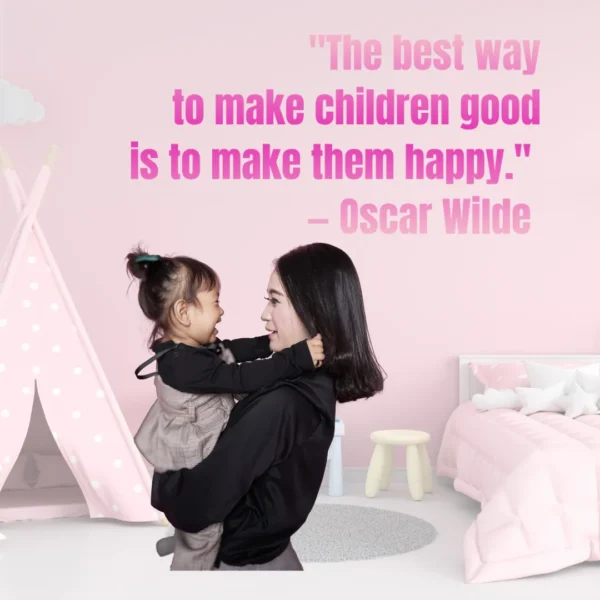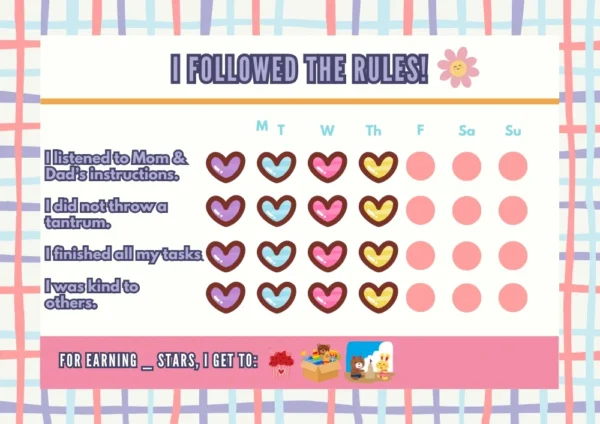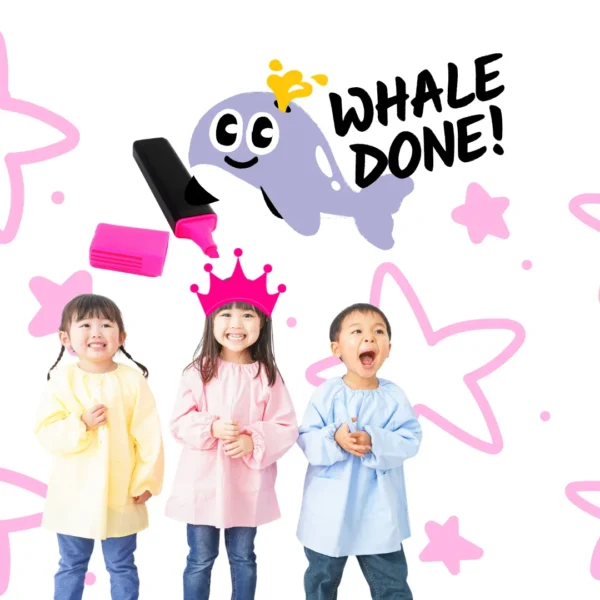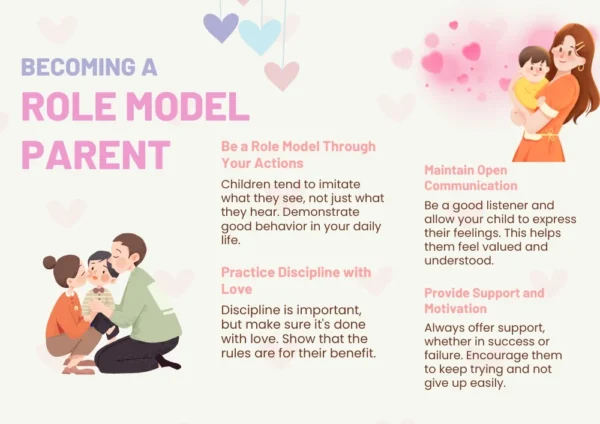Discipline in kids isn’t about punishment, especially not corporal punishment or verbal abuse. Effective discipline is about teaching kids self-control, responsibility, and mutual respect.
We all want our children to follow family rules, solve problems independently, make thoughtful choices, and treat others kindly. But how do we encourage good behavior during early childhood?
Is physical punishment most effective when a child misbehaves? Is positive parenting, or the so-called gentle parenting really impactful?
Today, let’s explore 15 science-backed strategies on how to discipline kids without the cost to their mental health and your relationship.
What Science Says About Discipline

“Discipline” often carries negative connotations. However, according to child psychiatry and developmental psychology, the real meaning of discipline is guiding children, not giving punishment for a child’s misbehavior.
Here’s a roundup of what the National Library of Medicine has to say:
- Physical violence only leads to aggression, anxiety, bad behavior, and low self-esteem
- Positive discipline strategies encourage long-lasting good behavior and healthy relationships
- Consistent discipline with clear expectations is the key, especially for older children
- Logical and natural consequences teach responsibility, making children self-reliant
- Children thrive in environments where the parents set a good example
Without further ado, let’s look at effective strategies grounded in research and see why controlling children’s actions through corporal punishment is only counterproductive.
1. Help Children Learn What Discipline Means
Kids, especially school-age children, often associate discipline with “getting in trouble.”
As parents or guardians, it’s our job to reframe discipline as learning self-control, making wise choices, and developing into a disciplined person.
Let’s teach children that even adults follow family rules and that our society needs basic rules to maintain peace and order.
2. Adjust Discipline Based on the Child’s Age and Development

What works for a toddler won’t fly with a teenager. Effective discipline must be age-appropriate because age, emotional development, and cognitive abilities all affect how children understand and respond to correction.
Take a 3-year-old, for example. If they’re scattering toys, you might gently redirect them and say, “Let’s pick them up and group them by color.” In early childhood, discipline is all about immediate feedback, redirection, and modeling positive behavior.
Now, try that same method with a teenager who plays video games after school instead of doing homework. Instead of redirection, you’re better off having a calm conversation about responsibility and following through with a logical consequence, like changing the WiFi password.
School-age children and older children need explanations, choices, and accountability. “Because I said so” doesn’t help, really. A parent’s role is to guide and build a disciplined person in society, not just a blind rule-follower.
3. Set Realistic Expectations for Appropriate Behavior
This is one of the foundations of effective parenting.
When we expect our children to be perfect, we unintentionally place pressure on them that can damage their self-esteem and mental health. Holding children to unrealistic standards only leads to anxiety, resentment, and resistance.
Instead, focus on progress, not perfection. Children are still learning, growing, and developing the tools to follow rules and manage their behavior.
When parents set reasonable limits that reflect their children’s age and abilities, they create a supportive environment for changing behavior over time.
Children raised in this setting learn self-discipline more naturally and grow with patience and compassion.
4. Teach Children Emotional Intelligence
Kids must learn to recognize their emotions and understand why they feel the way they do. As they build emotional intelligence, they’ll learn to express their feelings in healthier, more constructive ways.
So instead of brushing off their reactions, try saying “You look upset. Can you tell me what’s bothering you?” or “You seem angry. What went wrong?”
These simple questions show your child that their emotions are valid and worth talking about. Good discipline means choosing conversation over correction.
When you take the time and effort to guide these emotional moments, you’re not only preventing unpleasant behaviors from escalating. You’re also strengthening your child’s emotional fortitude and their ability to form respectful, trusting relationships throughout their life.
5. Teach Children to Pause and Reflect Before Reacting
Inappropriate behavior often stems from being impulsive. Unfortunately, young children frequently struggle with self-control when overwhelmed, causing them to act recklessly.
Teach simple techniques like taking deep breaths when they feel negative emotions. This pause encourages a child to think through their choices and make better decisions.
Over time, young children can become more emotionally balanced.
6. Use Visual Cues and Routine

Charts, timers, and other visual tools help children follow routines, especially kids with developmental disabilities or those who struggle with transitions.
Take a bedtime chart, for example. It turns bedtime from a wrestling match into a smooth routine, cutting down unacceptable behavior caused by confusion or resistance.
Adding in a bedtime story is a great bonus. Young children will look forward to bedtime and associate it with positive thoughts, making the transition a breeze!
7. Offer Choices to Support Autonomy and Self-Control
Did you know children are more likely to cooperate when offered choices instead of commands?
Instead of saying, “Wash the dishes after you’re done eating!” try a more respectful, empowering approach like: “Would you be willing to help by washing the dishes? I’d really appreciate it!”
When children feel a sense of autonomy, they’re more likely to take responsibility for their behavior. Plus, showing genuine appreciation boosts their self-worth and confidence, motivating them to contribute positively.
8. Encourage Children to Solve Problems Themselves
Imagine your child comes home upset, telling you they’re no longer friends with someone at school or that their teacher gave them a low score on their artwork.
The helicopter parent in us may want to spring into action and maybe march down to school. But true positive parenting isn’t about rescuing our kids from every uncomfortable moment. It’s about teaching them how to find solutions rather than just giving orders or immediately fixing the problem.
This approach helps children develop a critical and disciplined mind, stronger emotional regulation, and independence so they can make better choices in the future.School-age children, in particular, benefit greatly from being asked open-ended questions like, “What do you think you do differently next time?” These moments help children internalize lessons in a meaningful way.
9. Use Natural Consequences
Let consequences do the teaching. Children learn best when they experience the results of their actions.
Natural consequences happen without adult intervention, like feeling cold for refusing to wear a jacket to the park. No lectures needed.
On the other hand, logical consequences are intentionally set by adults and are directly tied to a child’s behavior. Let’s say your child refuses to put away their toys despite reminders. A fair response would be to make them unavailable for a while.Both these consequences teach kids that actions have outcomes and help them build accountability without name-calling or hitting children.
10. Praise Children for Their Efforts, Not Just Outcomes

Reinforce good behavior by recognizing effort: “Wow, you worked so hard on that difficult puzzle!” sounds more earnest than a generic “Good job.”
This builds self-esteem and resilience, especially among older children navigating academic and social growth. Likewise, it encourages children to keep striving even when things go south.
11. Be a Living Example of Good Discipline

Children learn by example, so be the example. Discipline starts at home.
Children emulate behaviors they witness from their family members. If you slam the door and mutter under your breath because your partner tells you to stop playing games or watching reels, don’t be surprised if you have a stubborn, aggressive child.
Modeling self-discipline helps reinforce positive behavior in everyday situations. Showing children how to resolve conflicts and respond appropriately by doing those yourself will go a long way in teaching them acceptable behavior as adults.
12. Respond Calmly and Avoid Physical Punishment
It’s difficult to remain calm when a child with ODD is giving you disrespectful retorts, but your response matters.
Reacting with verbal abuse or physical violence may stop the unwanted behavior in the moment, but it doesn’t teach the right lesson. It instills fear, chips away at confidence, and can eventually lead to resentment or even hatred.
You’ll have to remain calm but firm to send the message that you’re in control of the situation and your emotions. Can you see how powerful that is?
Modeling self-control teaches young children that managing emotions without aggression is the right thing to do. Being frustrated doesn’t warrant anyone a free pass to hurt anybody.
13. Follow Through with Consistency to Encourage Good Behaviour
Consistency fosters trust and stability. When boundaries are clear and expectations are consistently enforced, kids feel safe, secure, and respected.
Why? Because consistent discipline teaches children that the world is predictable and that good or bad actions come with fair, reliable outcomes.
On the flip side, inconsistencies cause confusion. If consequences change depending on your mood or the day of the month, children quickly learn that rules are flexible, negotiable, and sometimes optional. This encourages children, especially older children, to push limits and test boundaries.
14. Create a Safe and Stable Environment Where Children Can Express Themselves
Have you ever wondered why kids act up around their mothers? When children feel safe, they’re more likely to reveal their true feelings and open up about their mistakes instead of hiding them. This sense of security helps them reflect on their behavior and learn from it with your guidance.
As children grow into teenagers or young adults, they’ll feel more comfortable confiding in you because you can handle your emotions and talk to them without scolding or judging.
So, nurture an environment where your child feels heard, respected, and encouraged to solve problems with kindness. This way, they’ll know they can always come to you with anything, no matter how big or small.
As you can see, the home should be rooted in trust and emotional safety, and its peace should be safeguarded at all costs.
15. Set Limits to Promote Gratitude and Prevent Entitlement

Overindulgence is one of the most common mistakes parents are guilty of. I’ve seen it firsthand—even among friends—where parents try to make up for their childhood deprivations by showering their kids with toys, gadgets, and every wish fulfilled.
While the intention comes from a good place, the long-term impact can be damaging. It’s important to find the sweet spot between rewarding good behavior and instilling values that build character.
While there’s nothing wrong being a Daddy’s girl, children must learn early that the world doesn’t revolve around them. Setting reasonable limits teaches them to appreciate what they have, rather than expect more. It shifts their focus from material possessions to the deeper joys of connection, responsibility, and emotional strength.
As Dr. Laura Markham wisely puts it, “Children need to experience some level of disappointment to develop resilience and coping mechanisms. If they always get what they want, they miss out on learning how to deal with life’s inevitable challenges.”

